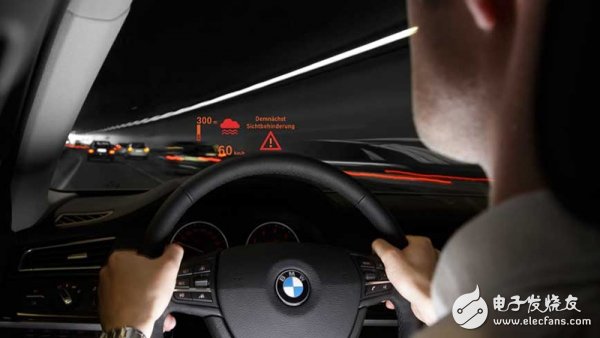Recent reports on unmanned vehicles have caught the eye, especially Google's experimental cars, which have traveled thousands of miles automatically, while minimizing the help of human drivers. These events are absolutely impressive and will revolutionize vehicle operations and our driving experience for a long time. However, the infinite expectation of unmanned vehicles is also easy for us to ignore the large number of short-term developments of car manufacturers, and these developments are equally important for changing driving behavior. These developments, collectively known as Advanced Driver Assistance Systems (ADAS), are designed to make cars safer, and the gradual introduction of these systems has improved road safety. In addition, the ADAS features and functions represent the ultimate in vehicle sensing, intelligence and control required for driverless vehicles. ADAS technology exists at different levels of active assistance, and the functionality they implement overlaps when these technologies are introduced. Driver information systems, such as simple rearview cameras, panoramic image displays, and blind spots and lane departure warnings, all provide relevant information, but are always controlled by the driver. Some autonomous systems, such as lane keeping assist and adaptive cruise control, enable the vehicle to self-control in a short period of time under carefully defined conditions, but the driver can step in and take over automatic control. A highly autonomous system, including automatic parking butler or driver monitoring and takeover, will fully control the vehicle under certain circumstances. These higher-level auxiliary levels use a more basic level of technology to open the way for unmanned, fully autonomous vehicles. At this level, the vehicle can operate autonomously regardless of whether there is someone in the driver's seat. Although current experiments have shown that the necessary technology for driverless cars already exists, it will take at least another decade to achieve mass production of fully autonomously controlled vehicles. However, advanced electronic systems take up most of the space of an automated test vehicle and are much more expensive than the price of the vehicle itself. To achieve driverlessness in mass-produced vehicles, this technology must be more commercial, smaller, lighter, and more affordable, a process that takes a while to complete. In addition, it takes time to overcome legal and social barriers. Obviously, the development, introduction and conversion of a large number of vehicles on the road to unmanned driving will be a revolutionary process that will be achieved through the development of many generations of vehicles. In essence, ADAS complements the automatic control of different aspects, starting with an independent subsystem and then increasing system integration until the vehicle is able to drive autonomously. The development of these different ancillary functions is the work of automotive manufacturers who expect semiconductor suppliers such as Texas Instruments to offer innovative technologies and solutions. Because of the rapid changes in ADAS technology, automakers need solutions that provide additional performance, system growth, and the flexibility to integrate new features with minimal design changes. ADAS and other automotive systems also present unusual challenges for manufacturing components, including operating under extreme temperature conditions, meeting higher quality, reliability and safety standards, and meeting stringent target costs. With its extensive experience in automotive electronics, TI can help ADAS developers deliver optimized, complete solutions that simplify design and significantly reduce component count. ADAS adoption status and challenges As mentioned earlier, some ADAS features are already available in the car, while others are still under development for the upcoming models. Information and alarm systems have been around for a number of years and have evolved into the basic auxiliary functions that are currently common. For example, many recent models have reverse assist. Ultrasound and cameras extend the driver's range of perception and automatically brake when an object suddenly appears behind the car. The camera and ultrasound can observe the rear of the vehicle when the vehicle is going backwards. Similarly, many drivers now rely on autonomous acceleration and steering wheel control to keep the car in the middle of the lane, even when the speed of the car is changing, it can cruise according to traffic conditions. Some cars combine ADAS information features such as panoramic or surround images with infotainment systems to provide owners with a new level of "information entertainment." Cognitive abilities have been introduced in early systems, such as reading street signs or detecting objects around cars, and buyers will have more choices in the coming years. According to the development model that people are already familiar with, these features that appear in the high-end models will be transferred to the mid-end models and will eventually be popularized in all new cars. In terms of safety, insurance companies, regulatory agencies, and legislatures are often involved, accelerating the phased introduction and implementation process through satisfactory insurance and legal authorization. In some cases, legislation is necessary to address legal accountability issues and to change existing needs. For example, current cameras and internal displays can replace external rearview mirrors, which not only improve safety by eliminating dangerous blind spots, but also make the car shape more streamlined, thus reducing vehicle fuel consumption and reducing carbon emissions. However, existing safety standards often require the need for rearview mirrors, so regulations must be changed to allow for these improved alternatives. The first change in the legal framework is to allow the use of cameras instead of side mirrors - a device called camera surveillance system that has been introduced in a few countries. Taking the European NCAP system as an example, the NCAP system has given star ratings for blind spot monitoring; while the US NHTSA requires all new factory vehicles to be equipped with rearview cameras by 2018. As communication begins between cars and cars, and between cars and devices along the road, security becomes another focus. While establishing these communications is important for automated vehicles, there is still a need to protect them from malicious attacks. These problems are not technically impossible, but they cannot be recognized by law and society overnight, and the functional safety standards that automakers must comply with need to be established. Manufacturers will need to rely on semiconductor and equipment suppliers to easily and quickly produce end products and bring them to market. Develop ADAS features The following chart identifies some of the important ADAS innovations that are currently or under development; however, these areas continue to evolve as new ideas emerge. Each of the listed autonomous control levels provides technical support for subsequent autonomous functions. That is to say, the information system may passively provide warnings to the driver, but they are also an indispensable component for all forms of autonomous functions. As such, basic active operations will be integrated with advanced control and fully automated operations. (These levels generally correspond to the National Highway Traffic Safety Administration's Automated Driving Level 5 classification, and the basic level of automatic driving of these vehicles is differentiated by the number of functions of the classified vehicles.) Information and alerts Side and rear cameras with driver display Reversing aid Close to intersection warning Ultrasonic sensing of the driver's line of sight in front of and behind the car Traffic signal recognition Lane marking detection Blind spot warning Night vision In the case of poor visibility, determine the range of objects in front Communication between vehicles and vehicles, and between vehicles and infrastructure Dynamic display image of the entire car and surrounding space Cab monitoring and warning when the driver is distracted Specific function of automatic driving Lane keep assisted to stay in the middle of the lane Adaptive cruise control for changing traffic conditions Avoid collisions by automatic braking Automatic emergency brake Intelligent headlight auxiliary function to illuminate the front corners or avoid blinding other traffic participants in the short term Combined function automatic driving Adaptive cruise control with middle of the lane Traffic jam assist Limited autopilot automation Automatic parking/parking assistance Automatic road driving Complete driverless automation
We have a full range of plastic jar Food Blenders, including 1L, 1.25L, 1.5L, 1.6L plastic jar food blenders with grinder. Plastic jar also have different materials, PS jar, AS jar and PC jar. Plastic Jar Blenders usually with 300/350W 7020 or 7025 motor.
Discription of Plastic Jar Food Blenders
Size: 1L, 1.25L, 1.5L, 1.6L
Material: PS, AS, PC unbreakable jar
Controls Type: Rotary switch, push button
Plastic Jar Food Blenders Plastic Jar Food Blenders,Plastic Jar Blenders,Blender Food Processor,1.5L Blender Flying Electronic Co., Ltd , https://www.flyingelectronic.com
